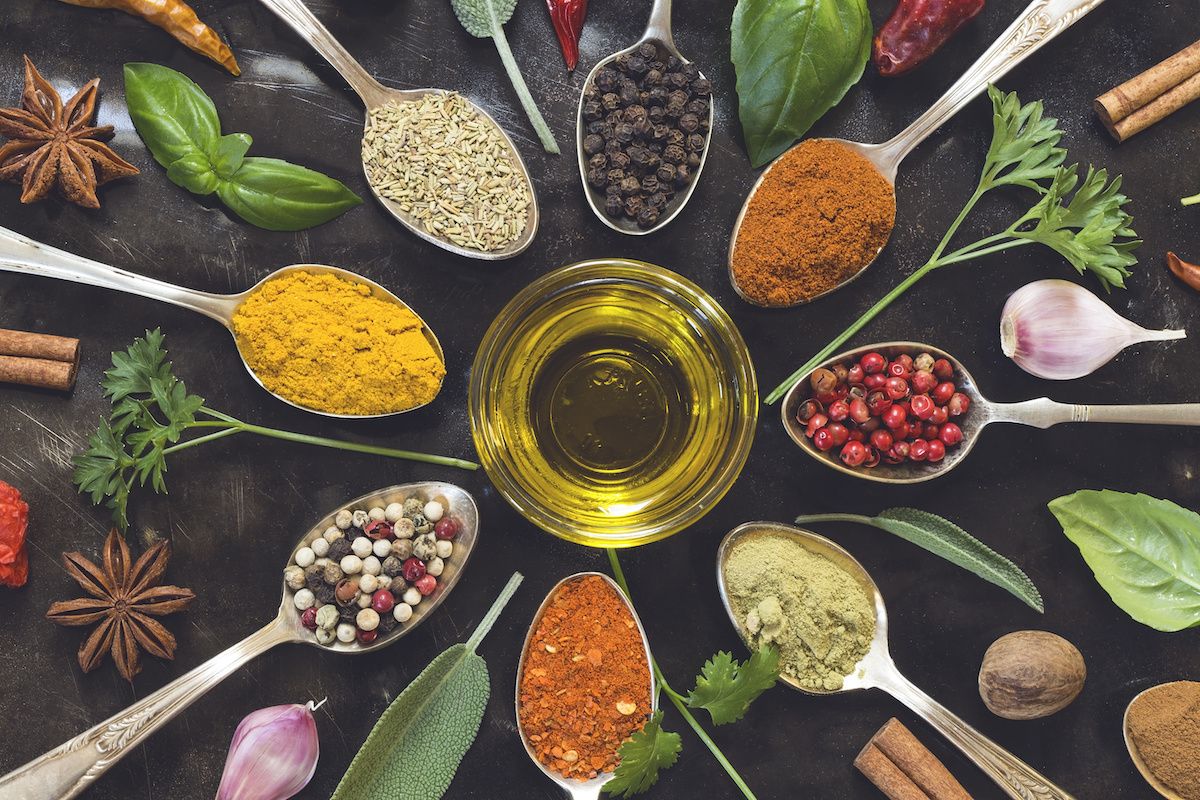March is National Nutrition Month® — a great time to learn new skills to create tasty meals. To prepare delicious meals at home, keep healthy ingredients on hand (from fresh fruits and frozen vegetables to canned beans), use different cooking techniques, share meals with loved ones when possible and try new flavors.
Some common flavor additions — sauces, syrups, cream and butter — can pack a lot of added sugar and saturated fat, but there are many savory alternatives. To enhance flavor without those unwanted extras, try different combinations of herbs and spices. This month, pick an herb or spice — fresh or dried — that you might not use very often and try adding it to some of your dishes. Here are just a few examples of flavorful herbs and spices to get you started:
- Cilantro — One of the world’s most popular herbs, cilantro has a bright and refreshing flavor and is a staple in Latin and Asian cooking.
- Rosemary — This herb adds a strong, pine-like flavor to soups and stews, meats, fish and potatoes. It pairs well with garlic, oregano, thyme and basil.
- Ginger — Used fresh, dried, ground or pickled, ginger has a sweet and spicy flavor that is great in soups and stews, curries, stir-fries, meats and fruit compotes.
- Paprika — Made from special kinds of sweet orange and red peppers, which are dried and ground, paprika can range from mild to hot, depending on the variety. It is commonly used in Spanish, South American and Hungarian cooking and goes well with eggs, rice, sweet potatoes, root vegetables, sauces, roasted meats and poultry.
- Turmeric — Used to add both flavor and yellow color, turmeric has a warm and earthy flavor and is common in Indian and Caribbean cuisines, often added to curries and pickled foods.
If you don’t know which herbs and spices pair well with different ingredients, check out this chart for some ideas.
Vegetables
Curry
Dill
Dry mustard
Marjoram
Sage
Thyme
Fish
Cumin
Curry
Dill
Dry Mustard
Green pepper
Marjoram
Onion
Paprika
Parsley
Savory
Poultry
Dill
Green pepper
Lemon juice
Marjoram
Oregano
Paprika
Rosemary
Poultry seasoning
Saffron
Sage
Savory
Tarragon
Thyme
In addition to herbs and spices, here are some other flavor-boosting ideas:
- Brighten up fruits and veggies with a drizzle of vinegar (cider, wine vinegar, balsamic, rice or flavored — any type will do). Or use the vinegar to make a tasty marinade.
- Caramelize sliced onions by cooking them slowly over low heat in a bit of oil. This will bring out their natural sweetness. They’re a great complement to poultry and other meats.
- Add some pep with hot spices and peppers, such as cayenne, jalapeños and roasted chipotle peppers or a dash of hot pepper sauce.
- Liven up your meal with condiments, such as horseradish, mustard, chutney, salsas of all kinds or other ingredients with bold flavors, such as pomegranate seeds.
- Add a tangy taste with citrus juice or grated citrus peel — lemon, lime, orange or grapefruit. Or go exotic with yuzu juice, made from an Asian citrus fruit and used in Japanese, Korean and other cuisines. These ingredients help balance flavor and can lighten the taste of heavier dishes. Add to marinades and rubs or squeeze over meats, pasta, rice and/or veggies.
- Plain yogurt mixed with herbs and spices can be used as a topping, marinade, or dip for veggies.
Spice up your March meals with these recipes:
Stuffed grilled portobello mushrooms
Never miss another Cancer Talk blog!
Sign up to receive our monthly Cancer Talk e-newsletter.
Sign up!


